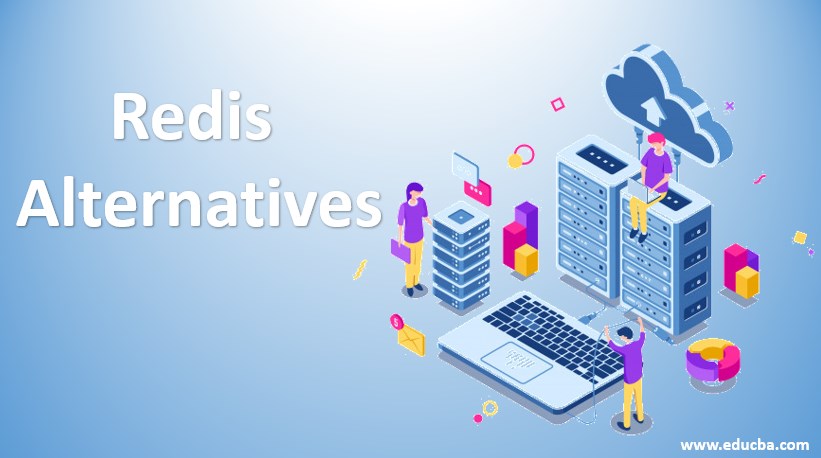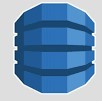Updated May 29, 2023

Introduction to Redis Alternatives
Let’s try to understand first what Redis is and then its alternatives. Redis is an acronym for the Remote Dictionary Server. It is an in-memory, key-value data store that is also open-source. One can use it extremely fast for caching session management, a high-performance database, and a message broker. It is a key-value store that can be used as a repository for reading and writing data.
Top 11 Alternatives of Redis
Let’s look into the top alternatives of Redis
1. MongoDB
MongoDB is a document-oriented storage platform allowing users to store objects in JSON-like documents rather than tables that vary in structure, thus offering a dynamic and flexible schema. Since all data related to a single object can be stored in its database, MongoDB is especially useful for projects with data sets from multiple sources.
Features of MongoDB:
- Document-oriented storage
- No-SQL
- Ease of use
- Fast
- High performance
- Free
- Open-source
- Easy to scale
2. Memcached
It is a high-performance cache framework for distributed memory objects. Memcached is a key-value storage in-memory for small pieces of arbitrary data, i.e., strings, objects from database calls, API calls, or page rendering performance. It is meant to boost dynamic web applications by reducing the load of databases.
Features of Memcached:
- Fast object cache
- High-performance
- Stable
- Mature
- Distributed caching system
- Improved response time and throughput
- Great for caching HTML
3. Hazelcast
Hazelcast is rich in features and business-friendly and developer-friendly in-memory data grid solutions. Hazelcast enables Java clustering and the distribution of highly scalable data. It supports various distributed data structures with distributed caching capabilities and elastic nature, supports Memcache, and integrates with Spring and Hibernate.
Features of Hazelcast:
- Distributed Locking
- In-Memory Database
- High Availability
- Distributed compute
- Load balancing
- Map-reduce functionality
- Rest interface
- Open Source
- Cross-platform clients
- Sharding
- 24/7 professional support is available
4. Apache Cassandra
Cassandra can replicate your data across several nodes for fault tolerance. It is possible to replace broken nodes without downtime. When you need scalability and high availability without losing performance, the Apache Cassandra database is the right option. On commodity hardware or cloud infrastructure, linear scalability and demonstrated fault tolerance make it the ideal critical data product. Cassandra makes use of rows and columns to organize data.
Features of Cassandra:
- Distributed
- High performance
- High availability
- Easy scalability
- Replication
- Reliable
- Multi datacentre deployments
- Open-source
5. CouchBase
Couchbase is often defined as a “Document-Oriented No-SQL Database.” It is most likely said to be an alternative to the traditional SQL databases. Couchbase is a NoSQL Database which is also an open-source built for the developer to solve real-time problems and satisfy scalability demands.
Features of CouchBase:
- Flexible data model
- Easy scalability
- Extremely fast
- High performance
- Mobile app support
- Local cache capability
- Cross datacenter replication
- Easy setup
- Easy cluster administrator
- Elasticsearch connector
- Open-source
- Ability to run ad-hoc SQL-like queries
6. ElasticSearch
ElasticSearch is often defined as an open-source, distributed, and restful search engine. Elasticsearch is a RESTful search and analytics system that can store and search data in almost real time. The Elastic Stack (sometimes named the ELK Stack) comprises of Elasticsearch, Kibana, Beats, and Logstash. Uber, Technologies, Instacart, and Slack are the top companies using ElasticSearch.
Features of ElasticSearch:
- Powerful API
- Great search engine
- Open-source
- Restful
- Near real-time search
- Easy to scale
- Fast search
- Used for analytics
7. Kafka
Apache Kafka is a messaging system allowing you to publish and subscribe to streams of messages based on topics and partitions. Kafka is a publish-subscribe messaging system. With streaming technologies such as Kafka, you can process new data as it is generated in your cluster, you might save it to HDFS, or you can save it to HBase or some other database, so you can process it in real-time as it comes in, you can do all that with streaming.
Features of Kafka:
- High throughput
- Distributed
- Scalable
- Pub-sub messaging model
- Avro schema integration
- Support multiple clients
- Robust
- Fault-tolerant
- Supports replication
8. RabbitMQ
RabbitMQ is a traditional message broker with various message protocols being implemented. To implement the Advance Message Queue Protocol (AMQP), RabbitMQ was initially developed. AMQP standardizes messaging with the help of Producers, brokers, and Consumers.
Features of RabbitMQ
- The throughput of messages is 1 million per second
- Better routing system
- Durable
- This works quickly and with reasonable metrics/monitoring
- Ease of configuration
- Distributed and reliable
9. DynamoDB
Amazon DynamoDB is a non-relational database for applications that require a high level of performance. DynamoDB is a quick and versatile NoSQL database software for all applications requiring constant, single-digit millisecond latency at any size.
Features of DynamoDB
- Free tier
- High Uptime
- Trigger tasks
- Easy integration with other Amazon services
10. ArangoDB
ArangoDB database is an open-source NoSQL application with a scalable data model for graphs, maps, documents, and key values. Build high-performance frameworks using SQL like query language or JavaScript extensions
Features of ArangoDB
- Document and graph-oriented
- Supports join
- Easy cluster setup
- Powerful Java driver for synchronous and asynchronous
- Can use ACID transactions
11. SAP Hana
SAP Hana is a relational database management system with in-memory and column-oriented characteristics. It makes use of an in-memory feature that enables a massive amount of real-time data to be processed in a short time. Instead of retrieving it from a disk, the in-memory processing engine allows it to handle data stored in RAM.
Features of SAP Hana:
- Easy to integrate with other SAP tools
- Very fast
- In-memory cache
- Easy to deploy
- Advanced key-value cache
- High performance
- High availability
So far, we have seen what Redis is and what are Redis’ top alternatives. Also, we have mentioned the characteristics of each option to make it easier to understand.
Recommended Articles
This is a guide to Redis Alternatives. Here we discuss the introduction and top alternatives of Redis along with its features. You may also look at the following articles to learn more –












